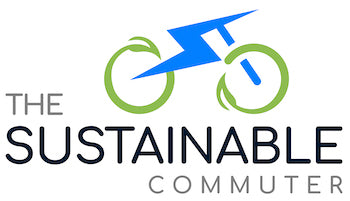
Prioritizing Sustainable Transportation in Cities for a Greener Future
Share
Sustainable transportation refers to the use of transportation methods and systems that have minimal negative impacts on the environment and promote a greener future. It involves reducing carbon emissions, improving air quality, promoting public health, and enhancing overall efficiency. In more sustainable cities, transportation is given high priority as it plays a crucial role in achieving environmental goals and creating a more livable and sustainable urban environment.
Cities around the world are taking various measures to prioritize sustainable transportation. These measures include:
Investing in Public Transportation Infrastructure: One of the key ways cities are prioritizing sustainable transportation is by investing in public transportation infrastructure. This includes improving and expanding bus and rail networks, building new transit lines, and implementing smart transportation systems. By providing reliable and efficient public transportation options, cities can reduce the number of private vehicles on the road, which in turn reduces congestion and carbon emissions.
Promoting Active Transportation: Cities are also prioritizing sustainable transportation by promoting active transportation, such as walking and cycling. This involves creating pedestrian-friendly streets, building dedicated cycling lanes, and providing bike-sharing programs. Active transportation not only reduces carbon emissions but also improves public health by encouraging physical activity and reducing sedentary lifestyles.
Encouraging the Use of Electric and Hybrid Vehicles: To further prioritize sustainable transportation, cities are encouraging the use of electric and hybrid vehicles. This is done through various initiatives, such as providing incentives for purchasing electric vehicles, building charging infrastructure, and expanding the availability of electric and hybrid vehicle options. Electric and hybrid vehicles produce fewer emissions compared to traditional gasoline-powered vehicles, contributing to improved air quality and reduced carbon footprint.
Implementing Policies and Regulations to Reduce Emissions: Cities are also implementing policies and regulations aimed at reducing emissions from transportation. This includes implementing low-emission zones, imposing emissions standards for vehicles, and promoting alternative fuels. By setting strict emission standards and encouraging the use of cleaner fuels, cities can significantly reduce the environmental impact of transportation.
Here are some examples of sustainable transportation initiatives:
1. JPMorgan Chase's commitment to investing in low-carbon transportation infrastructure: JPMorgan Chase has committed to investing $200 billion in clean energy and low-carbon transportation infrastructure by 2025. This includes financing projects that support the development of sustainable transportation systems, such as electric vehicle charging infrastructure and public transportation upgrades.
2. The City of Seattle's climate action plan to reduce emissions from transportation: The City of Seattle has developed a comprehensive climate action plan that includes strategies to reduce emissions from transportation. This includes expanding public transportation options, promoting electric and hybrid vehicles, and investing in cycling infrastructure. The city aims to achieve carbon neutrality by 2050.
3. The City of Vancouver's plan to increase cycling infrastructure: The City of Vancouver has prioritized sustainable transportation by investing in cycling infrastructure. The city has built a network of dedicated cycling lanes, bike parking facilities, and bike-sharing programs. These initiatives have resulted in a significant increase in cycling as a mode of transportation, reducing traffic congestion and carbon emissions.
Cities are prioritizing sustainable transportation by investing in public transportation infrastructure, promoting active transportation, encouraging the use of electric and hybrid vehicles, and implementing policies and regulations to reduce emissions. These initiatives contribute to the reduction of carbon emissions, improvement of air quality, promotion of public health, and enhancement of overall efficiency. While there may be challenges in implementing sustainable transportation initiatives, the benefits far outweigh the costs. By prioritizing sustainable transportation, cities can create greener and more livable urban environments for future generations.
How Cities Are Prioritizing Sustainable Transportation
Cities around the world are taking various measures to prioritize sustainable transportation. These measures include:
Investing in Public Transportation Infrastructure: One of the key ways cities are prioritizing sustainable transportation is by investing in public transportation infrastructure. This includes improving and expanding bus and rail networks, building new transit lines, and implementing smart transportation systems. By providing reliable and efficient public transportation options, cities can reduce the number of private vehicles on the road, which in turn reduces congestion and carbon emissions.
Promoting Active Transportation: Cities are also prioritizing sustainable transportation by promoting active transportation, such as walking and cycling. This involves creating pedestrian-friendly streets, building dedicated cycling lanes, and providing bike-sharing programs. Active transportation not only reduces carbon emissions but also improves public health by encouraging physical activity and reducing sedentary lifestyles.
Encouraging the Use of Electric and Hybrid Vehicles: To further prioritize sustainable transportation, cities are encouraging the use of electric and hybrid vehicles. This is done through various initiatives, such as providing incentives for purchasing electric vehicles, building charging infrastructure, and expanding the availability of electric and hybrid vehicle options. Electric and hybrid vehicles produce fewer emissions compared to traditional gasoline-powered vehicles, contributing to improved air quality and reduced carbon footprint.
Implementing Policies and Regulations to Reduce Emissions: Cities are also implementing policies and regulations aimed at reducing emissions from transportation. This includes implementing low-emission zones, imposing emissions standards for vehicles, and promoting alternative fuels. By setting strict emission standards and encouraging the use of cleaner fuels, cities can significantly reduce the environmental impact of transportation.
Sustainable Transportation Initiatives
Here are some examples of sustainable transportation initiatives:
1. JPMorgan Chase's commitment to investing in low-carbon transportation infrastructure: JPMorgan Chase has committed to investing $200 billion in clean energy and low-carbon transportation infrastructure by 2025. This includes financing projects that support the development of sustainable transportation systems, such as electric vehicle charging infrastructure and public transportation upgrades.
2. The City of Seattle's climate action plan to reduce emissions from transportation: The City of Seattle has developed a comprehensive climate action plan that includes strategies to reduce emissions from transportation. This includes expanding public transportation options, promoting electric and hybrid vehicles, and investing in cycling infrastructure. The city aims to achieve carbon neutrality by 2050.
3. The City of Vancouver's plan to increase cycling infrastructure: The City of Vancouver has prioritized sustainable transportation by investing in cycling infrastructure. The city has built a network of dedicated cycling lanes, bike parking facilities, and bike-sharing programs. These initiatives have resulted in a significant increase in cycling as a mode of transportation, reducing traffic congestion and carbon emissions.
Conclusion
Cities are prioritizing sustainable transportation by investing in public transportation infrastructure, promoting active transportation, encouraging the use of electric and hybrid vehicles, and implementing policies and regulations to reduce emissions. These initiatives contribute to the reduction of carbon emissions, improvement of air quality, promotion of public health, and enhancement of overall efficiency. While there may be challenges in implementing sustainable transportation initiatives, the benefits far outweigh the costs. By prioritizing sustainable transportation, cities can create greener and more livable urban environments for future generations.
